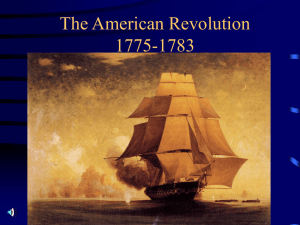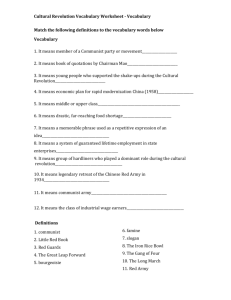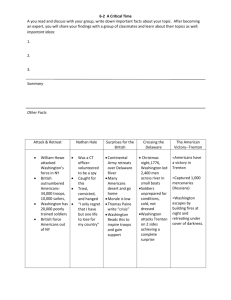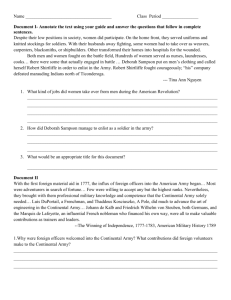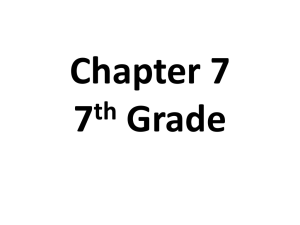The Revolution Part 4 Guide
advertisement
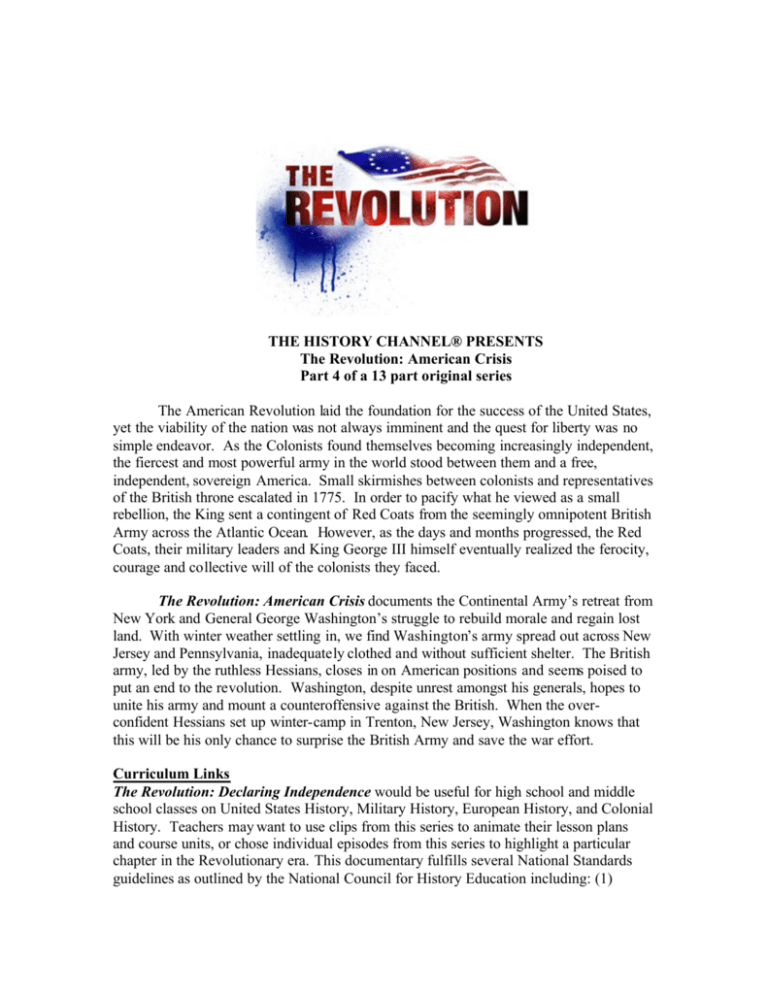
THE HISTORY CHANNEL® PRESENTS The Revolution: American Crisis Part 4 of a 13 part original series The American Revolution laid the foundation for the success of the United States, yet the viability of the nation was not always imminent and the quest for liberty was no simple endeavor. As the Colonists found themselves becoming increasingly independent, the fiercest and most powerful army in the world stood between them and a free, independent, sovereign America. Small skirmishes between colonists and representatives of the British throne escalated in 1775. In order to pacify what he viewed as a small rebellion, the King sent a contingent of Red Coats from the seemingly omnipotent British Army across the Atlantic Ocean. However, as the days and months progressed, the Red Coats, their military leaders and King George III himself eventually realized the ferocity, courage and collective will of the colonists they faced. The Revolution: American Crisis documents the Continental Army’s retreat from New York and General George Washington’s struggle to rebuild morale and regain lost land. With winter weather settling in, we find Washington’s army spread out across New Jersey and Pennsylvania, inadequately clothed and without sufficient shelter. The British army, led by the ruthless Hessians, closes in on American positions and seems poised to put an end to the revolution. Washington, despite unrest amongst his generals, hopes to unite his army and mount a counteroffensive against the British. When the overconfident Hessians set up winter-camp in Trenton, New Jersey, Washington knows that this will be his only chance to surprise the British Army and save the war effort. Curriculum Links The Revolution: Declaring Independence would be useful for high school and middle school classes on United States History, Military History, European History, and Colonial History. Teachers may want to use clips from this series to animate their lesson plans and course units, or chose individual episodes from this series to highlight a particular chapter in the Revolutionary era. This documentary fulfills several National Standards guidelines as outlined by the National Council for History Education including: (1) Values, Beliefs, Political Ideas and Institutions, (2) Conflict and Cooperation, (3) Patterns of Social and Political Interaction and (4) Comparative History of Major Developments. Vocabulary Using the dictionary at www.merriamwebster.com, an internet resource such as www.history.com, or an encyclopedia, students should define or explain the significance of the following terms: Continental Congress Coup Enlistment Hessian Internment Garrison Loyalist Mercenary Opine Vexed Comprehension Questions 1. Ignoring others and listening to the advice of his most trusted general, Washington chose to defend Fort Washington against the Hessians. Washington lost over half of his army in this failed defense attempt. Though Washington is this nation’s most revered general, what role should discussion and compromise play in making military decisions? 2. The Hessians were vital to the British war effort, yet they were mostly Germanborn. Who were they? Describe some of their most notorious characteristics. More importantly, what are the implications of having foreigners fight for other countries? Can you think of any other examples of this happening? 3. What was the reaction of the British when they captured Fort Washington and saw their Colonial soldiers up-close for the first time? 4. Who was Molly Corbin? Why was this housewife so significant? 5. In what way did the British view the captured American soldiers differently from normal prisoners of war? 6. How did Washington deal with the knowledge that many of his soldiers questioned his abilities? Specifically, how did he react when he accidentally read a letter in which one of his top generals expressed his disdain for Washington? 7. What role did Thomas Paine play in rallying the American troops after countless setbacks? 8. In order to revitalize the war effort and use his severely outnumbered troops effectively, how did Washington change his strategy? Extended Activities Rallying the Troops The loss of Fort Washington combined with the harsh conditions of winter served to deflate any vestiges of morale amongst the American army. Barely half of its original size, the army was depleted and surrender seemed imminent. Imagine you are George Washington. How would you rally your troops to continue fighting against the British? Write a heartfelt speech imploring the soldiers to remain enlisted. Keep in mind that patriotism towards the United States was still in its early stages. How would you foster pride in a nation that has just come into existence? Letter to the General Washington accidentally opened a letter sent from one American general to another that expressed concern with Washington’s abilities to lead the Continental Army. If you were in Washington’s position, how would you react to this blatant display of contempt? Draft a letter back to the general either assuring or chastising him for his distrust. Remember, what is good for an army and a nation may not necessarily coincide with personal beliefs. General Resources The Complete History of the American Revolution and the Revolutionary War: www.americanrevolution.com/Links.htm Emory University’s website with primary sources including documents, paintings and speeches regarding the American Revolution: http://www.law.emory.edu/FEDERAL/conpict.html#const Maps from the Revolutionary War era: http://memory.loc.gov/ammem/gmdhtml/armhtml/armhome.html Military Resources on the American Revolution including digitized photographs of original paintings and drawings of battles: http://www.archives.gov/research/american-revolution/pictures/index.html Online Resources for American Crisis Extensive discussion of the Battle of Trenton http://www.pbs.org/ktca/liberty/chronicle_trenton1776.html Extensive discussion of Washington’s crossing with photographs of the Delaware River http://www.state.nj.us/travel/virtual/tendays/intro.html Letters from George Washington to General Charles Lee http://www.pbs.org/georgewashington/collection/war_1776nov14.html http://gwpapers.virginia.edu/documents/revolution/lee/index.html The Metropolitan Museum’s discussion of the famous painting of Washington crossing the Delaware River http://www.metmuseum.org/explore/gw/el_gw.htm Books and other Resources for American Crisis Billias, George Athan. George Washington’s Generals and Opponents: Their Exploits and Leadership. Da Capo Press, 1994. Dwyer, William M. The Day Is Ours!: An Inside View of the Battles of Trenton and Princeton, November 1776-January 1777. Rutgers, 1998. Fischer, David Hackett. Washington’s Crossing. Oxford, 2004. Ketchum, Richard M. The Winter Soldiers: The Battles for Trenton and Princeton. Owl Books, 1999. McCullough, David. 1776. Simon & Schuster, 2005.
